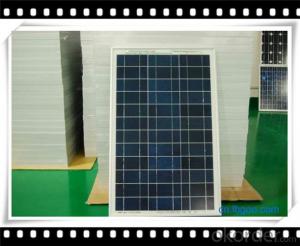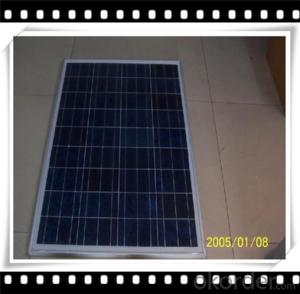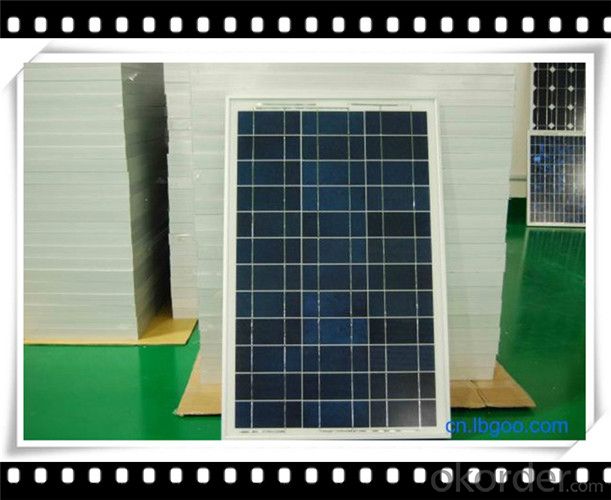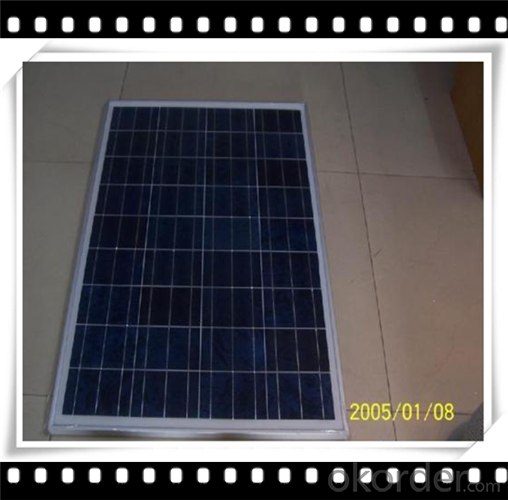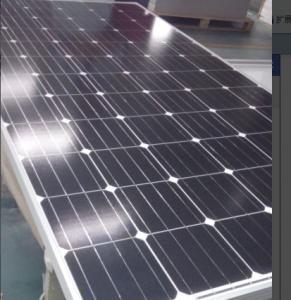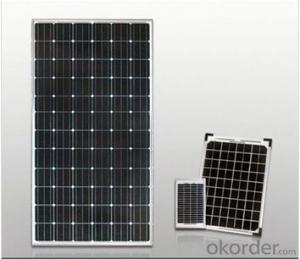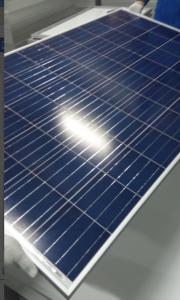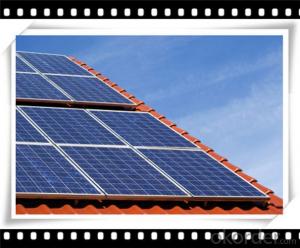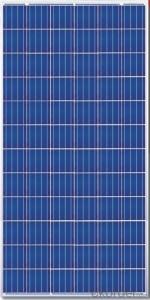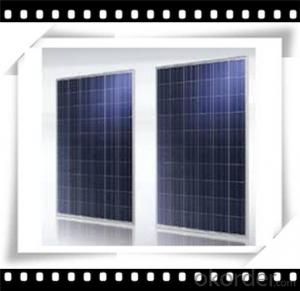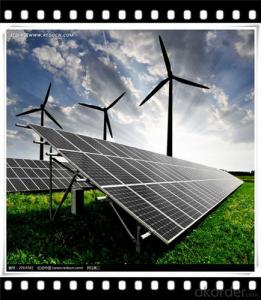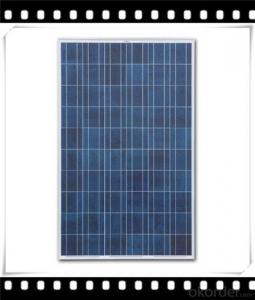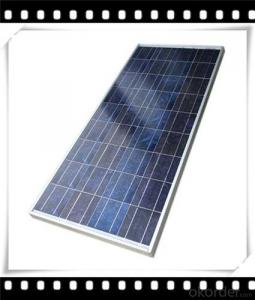Newest 310W Poly Solar Panel - Medium Solar Panel Manufacturer in China CNBM
- Loading Port:
- Qingdao
- Payment Terms:
- TT OR LC
- Min Order Qty:
- 10 set
- Supply Capability:
- 300000 set/month
OKorder Service Pledge
OKorder Financial Service
You Might Also Like
Polycrystalline Solar Modules
CNBM offers a range of small, medium and large polycrystalline solar modules, designed for a range of requirements.
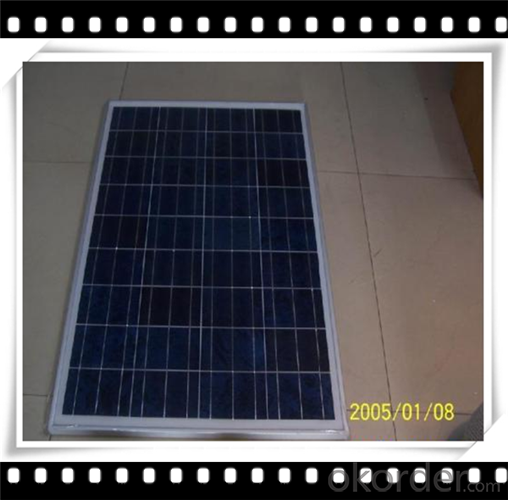
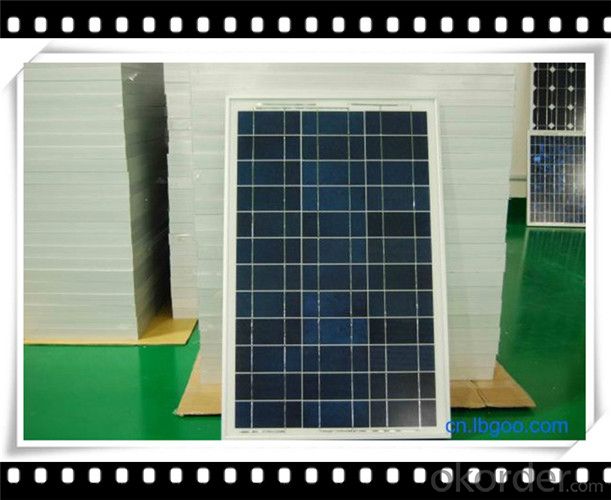
Specifications:
+/-3% |
Polycrystalline silicon solar cells (156 x 156mm) |
60 (10 x 6) |
1650 x 990 x 40 |
25.5 |
Limits:
Operating Temperature | -40~+85? |
Storage Temperature | -40~+85? |
Maximum System Voltage | 1000 VDC max. |
Hail Impact | Diameter of 28mm with impact speed |
Temperature and Coefficients:
NOCT | 48C+/-2? |
Voltage temperature coefficient (%/K) | -0.35 |
Current temperature coefficient (%/K) | 0.05 |
Power temperature coefficient (%/K) | -0.45 |
Characteristics:
Model: | SGM-200P | SGM-210P | SGM-220P |
Max-power voltage Vmp (V) | 29.2 | 29.4 | 29.41 |
Max-power current Imp (A) | 6.85 | 7.14 | 7.48 |
Open-circuit voltage Voc (V) | 36.5 | 36.69 | 36.9 |
Short-Circuit Current Isc (A) | 7.28 | 7.6 | 7.93 |
Max-power Pm(W) | 200 | 210 | 220 |
Model: | SGM-230P |
Max-power voltage Vmp (V) | 29.8 |
Max-power current Imp (A) | 7.72 |
Open-circuit voltage Voc (V) | 37.31 |
Short-Circuit Current Isc (A) | 8.19 |
Max-power Pm(W) | 230 |
STC: Irradiance 1000W/m2, module temperature 25?, AM-=1.5
Poly Crystalline Solar Panels Specifications Range
Maximum Power (Pm) | Dimension | Weight | Operating Voltage (Vmp) | Operating Current (Imp) | Open Circuit Voltage (Voc) | Short Circuit Current (Isc) |
0.45W | 140x80x10mm | 0.08kg | 3.3V | 150mA | 4.6V | 160mA |
1.0W | 162x140x10mm | 0.16kg | 7.5V | 150mA | 10.3V | 160mA |
4.5W | 269x251x23mm | 0.8kg | 16.5V | 0.27A | 20.5V | 0.3A |
10W | 420.1×268.9×22.6mm | 1.92kg | 17.5V | 0.58A | 20.5V | 0.6A |
20W | 425x502x50mm | 3.0kg | 16.8V | 1.19A | 21.0V | 1.29A |
30W | 593x502x22.6mm | 3.9kg | 16.8V | 1.78A | 21.0V | 1.94A |
40W | 655x537x50mm | 5.75kg | 17.3V | 2.31A | 22.1V | 2.54A |
50W | 839x537x50mm | 6.0kg | 17.5V | 2.9A | 21.8V | 3.17A |
65W | 1111x502x50mm | 7.2kg | 17.6V | 3.69A | 22.1V | 3.99A |
80W | 1204x537x50mm | 7.7kg | 17.6V | 4.55A | 22.1V | 4.8A |
- Q: Can solar panels be installed on a residential community or housing development?
- Yes, solar panels can be installed on a residential community or housing development. In fact, many residential communities and housing developments are incorporating solar panels as a sustainable and cost-effective energy solution. Installing solar panels on rooftops or open spaces within the community can generate clean energy, reduce electricity bills, and contribute to a greener environment.
- Q: I am writing a lab for school and I need to know who invented solar panels? Any help would be great.
- Google would like to be your friend - Try - who invented solar panels and see what turns up.
- Q: My mom's house has some solar power panels on the top of her house but they are not connected to anything. They don't even have wires or anything like that. Does anyone know how to connect and make solar panels work? Thank You
- It sounds like you nor anyone at your home knows enough about solar to be able to hook them up no matter what type they are. I have to agree with others that they could be hooked up and you just can't see the connections. So the best thing for you to do is get a contractor to come out and check them out. It don't have to be a Solar Dealer because I am a dealer and I use electrical contractors to do the installs. A solar dealer is not always legal to install and normally do like I do and just design and sell the systems. However most any dealer can easly install a solar power system because they are trained just not legal to do the work. Having someone other then an electrician work on it could void the warranties.
- Q: I am looking to get some solar panels for my home to just power a few lights, a fan or two. I have a generator but I want that only to power the fridge and maybe some other small stuff for convenience.But mainly want the solar panels for the lights and fans. Any one have an idea of how about I go to figuring this all out? Should I call a contractor or anything?
- depends on what light bulbs you have in watts.depends on how many you want on. for the power equation you take P which equals watts x I which equals amps and E which equals volts and you multiply the amps and the volts together to get the watts which the solar panel is generating. for example if you had 7 60 watt light bulbs you would need 420 watts generated. which if you got 50 watt panels each you would need 9 panels. and for what your talking about if you want the stuff to work when the power goes out you are going to need an inverter. not to be confused with a grid ti inverter. and a few batteries i recommend deep cycle batteries that are meant for solar panels. depends on what fan you have.
- Q: When you consider that solar panels will not produce enough electricity in their service life to cover their cost should we subsidize them anyway? that much of the cost of a solar panel is the energy to manufacture, install, transport and maintain them. Shouldn't the market determine whether they are worth installing?Is subsidizing them taking money away from research that could be spent on more viable alternatives?Should we be taxed to pay for others solar panels when they don't work?
- Recent investments into solar panels have brought about a couple of interesting realizations and developments. One, as you state, is that traditional solar panels (silicon crystalline panels) are not currently cost effective, even will full-scale manufacturing production. It's possible that improved manufacturing techniques will bring the retail price down somewhat, but it needs to be brought down a lot to make economic sense without incentives. The other, though, is that a new method of producing solar panels - thin film technologies - has been developed. These are currently quite expensive, but because there are no crystals to grow, they are expected to drop significantly in price as production increases. I believe that this technological development has been made as a direct result of government support for solar energy. It is not taking money away from research - rather it is providing the incentive for research. I could be wrong. I've been wrong before. But I think that these new solar technologies, which are already hitting the market, will dramatically change the economics of solar energy.
- Q: what kind of rays are used in solar panels?
- Electromagnetic...meaning light rays, primarily in the visible spectrum. Ultraviolet and infrared light rays actually degrade most types of solar panels, limiting their useful lifetime. That said, your question is not stated well...so I'm not sure if that's the information you were looking for. Rays are not used in solar panels...rather solar panels are used to collect sunlight and convert it to energy--either directly into heat in the case of passive solar, or into electricity by the use of photovoltaic cells.
- Q: How much space is required for installing solar panels?
- The amount of space required for installing solar panels can vary depending on factors such as the size and type of panels, as well as the energy needs of the property. However, on average, a typical residential solar panel system requires about 100-400 square feet of roof space per kilowatt of installed capacity.
- Q: Are solar panels worth it?? I mean the price you by for them up front is a lot, so you properly need a loan for it. So how does it work? Won't the loan be just as much as you electric bill?Im just really confused about it.
- If your purchasing solar panels for a building or colony where a few families live together, the cost of the panels can be distributed or shared. And loan and electricity bill wont be the same. Loan is a one time transaction while electricity bill you have to pay monthly and everytime. You dont have to buy solar panels every month lol. So its a better option to spend on solar panels although it maybe a big amount, rather than paying high bills every month....
- Q: Can solar panels work during cloudy or rainy days?
- Yes, solar panels can still work during cloudy or rainy days, but their efficiency is significantly reduced. Solar panels generate electricity by converting sunlight into usable energy, so the amount of energy produced is directly related to the amount of sunlight available. Cloudy or rainy weather reduces the intensity of sunlight reaching the panels, resulting in a lower electricity output. However, solar panels can still generate some power even in these conditions, making them a viable source of renewable energy even on less sunny days.
- Q: How could I find out what the amp output of a solar panel? Specifically, I want to know how many milliamps can the solar panel on a Casio fx-260 put out?
- You need full sunshine from the sun, or a lamp that will give a light spectrum similar to the sun, a volt meter, Milli-amp meter, and a variable resistor of 0 to 000 ohms. The voltmeter test leads go across the solar cell leads. The amp meter leads will be in series with the solar cell. Let's say, positive lead of the solar cell to the the positive lead of the amp meter, the negative lead of the amp meter to one terminal of the variable resistor, and the wiper terminal of the variable resistor to the negative lead of the solar cell. Slowly decrease the value of the resistor until the voltage from the solar cell just begins to drop. Take note of the amp meter reading. This is about the high end range of the solar cell. You might want to begin with a micro-amp meter for the current meter.
Send your message to us
Newest 310W Poly Solar Panel - Medium Solar Panel Manufacturer in China CNBM
- Loading Port:
- Qingdao
- Payment Terms:
- TT OR LC
- Min Order Qty:
- 10 set
- Supply Capability:
- 300000 set/month
OKorder Service Pledge
OKorder Financial Service
Similar products
Hot products
Hot Searches
Related keywords
